Table of Contents
Introduction
Knowledge of Bee Farming
Bee farming, or apiculture farming, is a centuries-old vocation that has evolved into a lucrative agriculture sector trade business globally. It is the scientific breeding and maintaining of honey bees for production of commercial-scale honey, beeswax, royal jelly, propolis, and other useful products.
A well-maintained honey bee farm is not only business product-generating but is also a beautiful gift to nature in the form of pollination. Contemporary bee farming integrates traditional information and scientific methodologies to guarantee the productivity and health of bee colonies.
New farmers first need to know bee behavior, hive management, and seasons before engaging in apiculture agriculture.
Bee farming has also become increasingly popular because it has relatively low land demands and high returns. A small honey bee farm can deliver appreciable returns with minimal investment, unlike other crops.
By positioning several hives strategically and in their prime, farmers can have a steady yield of honey and other bee products. Bee farming also supports biodiversity in terms of crop pollination, and this in turn enhances food output and ecosystem well-being.
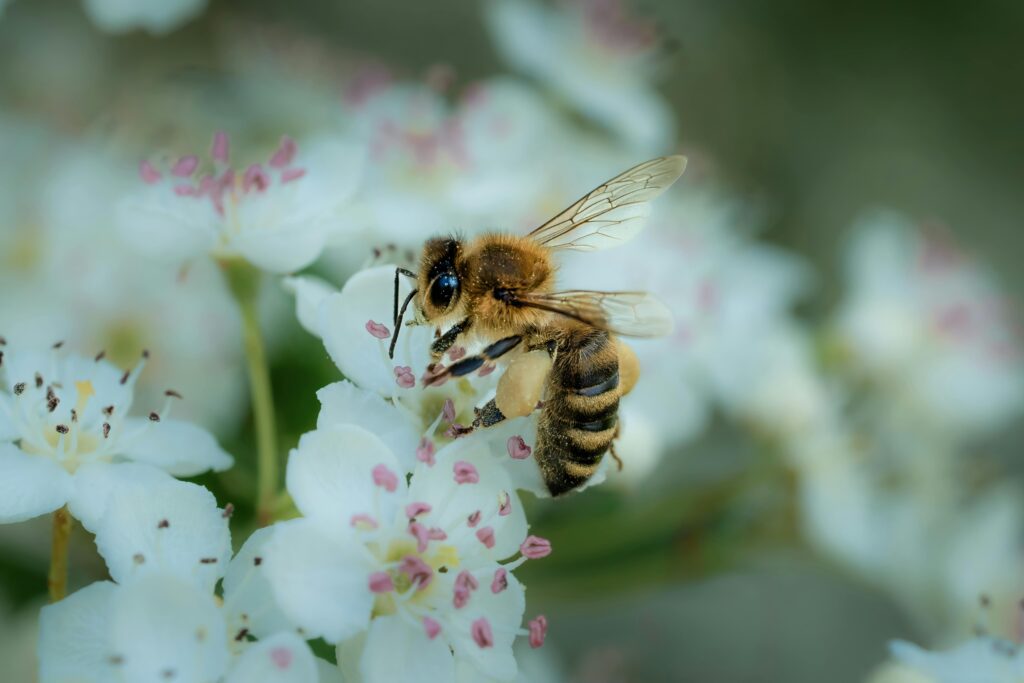
For anyone interested in sustainable agriculture, bee farming is both economically and environmentally rewarding.
The Emerging Impact of Apiculture Farming
Apiculture farming is currently in high demand all over the world because of the immense demand for natural and organic honey and massive awareness of bee conservation. Honey is a natural sweetener with medicinal and nutritional value and has a secure, expanding market.
Besides honey, by-products like beeswax, royal jelly, and propolis are also sources of revenue, thus making honey bee farms very lucrative. Businessmen and farmers both are now discovering that apiculture farming is neither a secondary business but a very profitable business venture with long-term prospects.
Setting up a profitable honey bee farm involves careful planning and knowledge about bee species, flora in your area, and seasonal operations. For example, choosing the proper species of bees compatible with your area ensures better adaptability and honey production.
In addition, contemporary apiculture farming is concerned with sustainable management approaches like organic nutrition, low chemical input, and integrated pest control, which maintain the health of the colony and protect environmental integrity.
With such practices, bee farmers can establish productive, profitable, and ecologically friendly honey bee farms.
Benefits of Bee Farming
Economic Benefits of Apiculture Farming
Perhaps the most powerful reason for initiating bee farming is economic gain. Apiculture farming is a high-gain, low-input crop. Even small honey bee farms with just a few hives can make a tremendous amount of money selling honey alone.
By-products such as beeswax, royal jelly, propolis, and pollen present extra sources of income. For instance, beeswax has extensive use in cosmetics, candles, and pharmaceuticals, while propolis is sought due to its medicinal properties.
Most successful honey bee farms prefer to produce various products to diversify income so that they are not overly dependent on one market. Such financial flexibility makes bee farming a good business for both small farmers and commercial agricultural companies.
Additionally, honey from a prosperous honey bee farm is generally sought after by health-aware consumers, providing stable and increasing demand.
Environmental Benefits of Honey Bee Farms
Besides economics, honey bee farms are essential to the sustainability of ecological balance. Bees are nature’s fruit, vegetable, and blooming crop pollinators, and they are responsible for their harvests across the world.
A properly managed honey bee farm can then increase the yield of crops in nearby agricultural fields, promoting food security and sustainability. This makes apiculture farming not just a personal source of income but also a significant pillar to communal agriculture.
Bee keeping also promotes biodiversity by promoting the existence of indigenous plants and flowers. Bees allow cross-pollination, which helps maintain other plantspecies, contributing to pollinators and wildlife.
By adopting sustainable bee farming practices, farmers are able to maintain a sustainable ecosystem while reaping a lucrative honey bee farm.
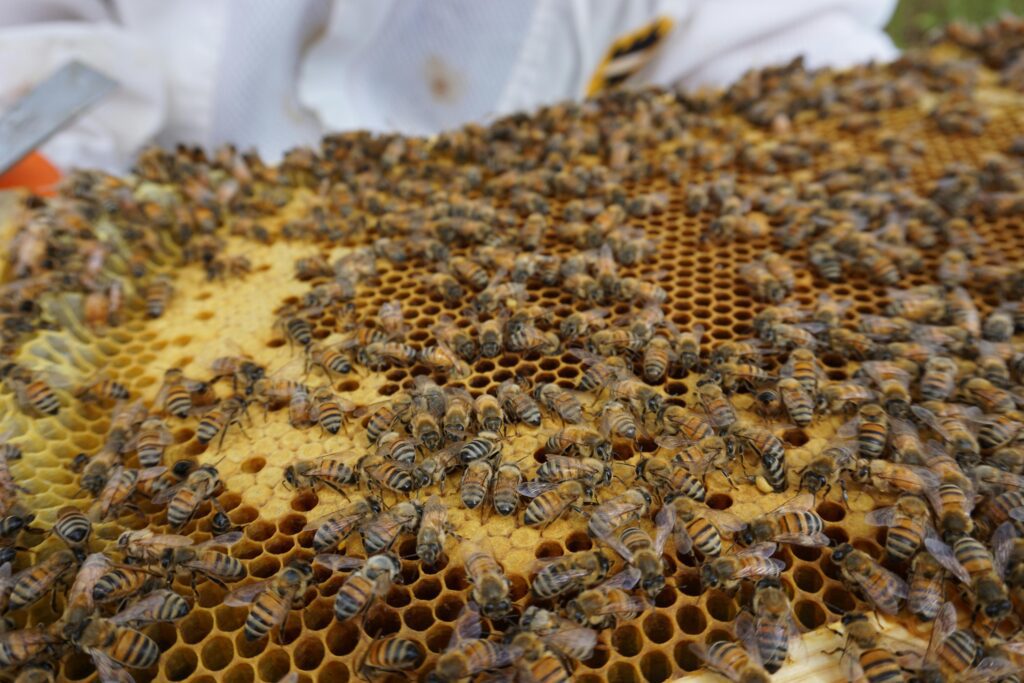
Health and Nutritional Benefits
Honey harvested through bee farming is a natural sweetener with high levels of antioxidants, vitamins, and minerals. Daily use of honey has been associated with enhanced immunity, healing, and digestive functionality.
Royal jelly, yet another farm produce of beekeeping, is a superfood because of the heavy nutrient content and possible health gain such as greater energy and overall well-being.
Propolis from a honey bee farm also finds extensive application in traditional homemade medicines because of antibacterial and anti-inflammatory features. Thus, bee farming is not only economically rewarding but also the greater availability of nature-based high-grade health products.
By emphasizing and promoting these nutritional benefits, honey bee farmers tap into specialty markets, thus increasing profitability even further.
Minimum Land Needed and Flexibility
Another advantage that makes bee farming attractive is the minimum land needed in contrast to conventional farming. It does not require enormous pieces of land; rooftops, orchards, or small gardens are even sufficient for hosting numerous hives without complications.
This is the advantage of bee farming in that it makes the farmer easy to incorporate with other farm activities, say fruit plantations or vegetable crops. By positioning the hives strategically close to flower-blooming crops, farmers can optimize pollination, boost the yield of crops, and produce high-quality honey at the same time.
This combination of bee farming and agricultural farming is of a two-fold advantage, both boosting food production and income. There is also urban bee farming, which shows the sustainability of this practice under different conditions.
Methods of Successful Bee Farming
Choosing the Right Bee Species
One of the essential factors in successful bee farming is picking the appropriate bee species for your region. Various species of bees have varying temperaments, honey production, and climate tolerance in the local environment.
For instance, the Italian honey bee (Apis mellifera ligustica) is widely grown across the world because it produces a lot of honey and is very friendly, so that it can be touched by inexperienced bee farmers.
Alternatively, native bees in some regions can be more immune to local pests and diseases, which is important in order to make a honey bee farm successful. With a good selection of bee species that fit your conditions, apiculture farming is made easier with regular honey yields and powerful colonies.
Seasoned bee farmers like to have multiple species to diversify honey production and reduce risks from seasonality or disease epidemics.
Design and Hive Maintenance
Successful design and care of hives are crucial for a productive honey bee farm. Modern beekeeping employs transportable-frame hives, such as the Langstroth or Dadant hive, to facilitate ease in inspection, honey harvesting, and colony management.
Maintenance involves inspection of hive health, pest and disease checks, proper ventilation, and room space for bees. Swarming, decreased honey production, and colony weakening are caused by overpopulation.
Cleaning the hives and replacing old or broken frames is also important in a bid to achieve optimal productivity. For small-scale honey bee farms, utilizing local resources is capable of curtailing on expenditure without compromising quality for the bees.
Optimal hive management is the essence to prosperous apiculture farming and contributes to a sustainable honey bee farm in the long run.
Feeding and Nutrition
Bees must be well-nourished to continue being healthy and productive. A viable honey farm is where colonies are subjected to varied floral sources with a healthy ratio of nectar and pollen intake.
Where flowers are limited, supplement feeding with sugar syrup or pollen substitutes will sustain colony growth and sustain honey production. Adequate feeding optimizes brood rearing, immunity, and overall strength of the colony.
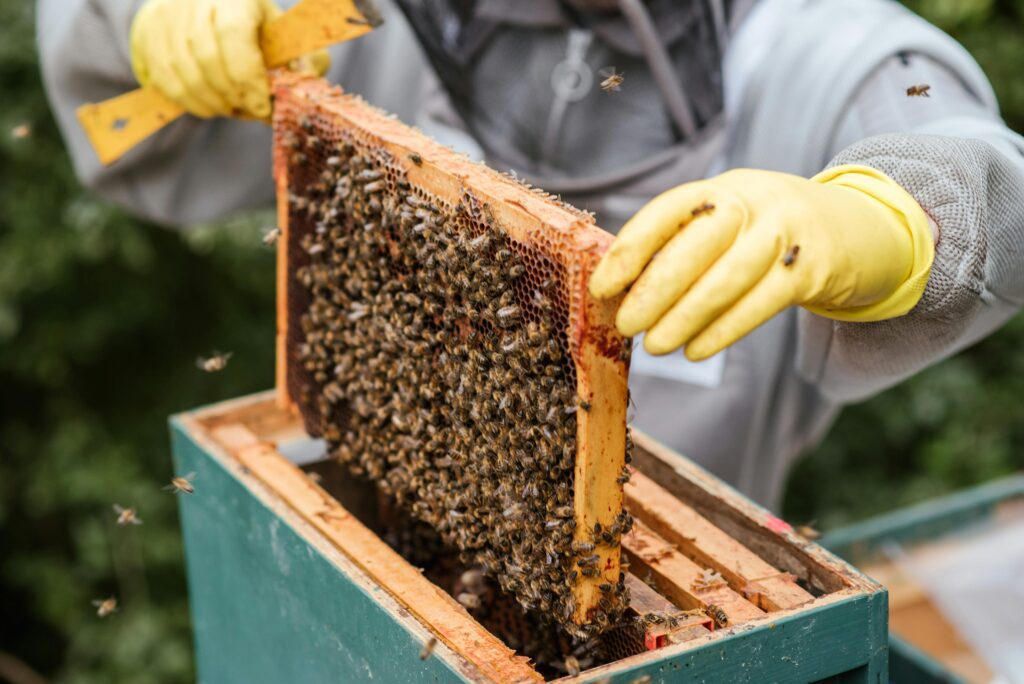
Professional apiculture farmers control flowering seasons in seasons and arrange for the placement of the hives for them in an effort to attain maximum nectar collection. Furthermore, proper feeding eliminates malnutrition problems, lessens stress on the colony, and provides a consistent honey supply.
Nutrition control is thus a vital method of running a successful honey bee farm.
Disease and Pest Management
Diseases and pests are important issues that attack any honey bee farm. Some common pests of concern include Varroa mites, wax moths, Nosema, and bacterial diseases such as American foulbrood.
Effective apiculture farming is preventative and entails routine inspection of hives, cleanliness, and the wise use of natural or chemical control methods.
Integrated pest management (IPM) strategies, which combine cultural, biological, and chemical strategies, are highly efficient in managing infestations without affecting bees. Early diagnosis and treatment of disease avoid colony collapse and safeguard a honey bee farm’s future productivity.
Skilled bee farmers typically rotate the hives, cull out ill combs, and implement resistant bee strains to reduce the effect of pests and diseases.
Harvesting Honey and By-products
Harvesting honey and other products of bees in a proper way is required to have healthy hives and for quality. Capped frames should be used to extract honey, showing ripened honey. Over-extraction weakens the colony, decreases future production, and puts the hive in poor condition.
By-products such as beeswax, royal jelly, and propolis must be harvested with care using specialized technique. Proper storage and packaging in sound condition guarantee quality of product and enhances shelf life, which is pivotal for promotion.
Successful bee farming involves a balance between honey yield and colony viability, being profitable with a viable honey bee farm while garnering maximum revenue. Experienced farmers will have more than one harvest annually to align with flowering periods, ensuring maximum output and profitability.
Problems in Bee Farming
Dependence on Weather and Climate
One of the major problems with bee farming is that it is so dependent on climate and weather conditions. Beekeeping is a pollen-and nectar-intensive activity, and hence honey bee farms are susceptible to unseasoned rain, too much heat, or prolonged cold.
Unpredictable temperature fluctuations can lower foraging, restrict nectar flow, and negatively affect honey production in general. For example, in areas that have unseasonal rains, flowering may become disturbed so that the colony does not have enough food.
Apiculture farming needs close monitoring of local climatic trends and sowing flowering flowers or other diet regimes to maintain a continuous food supply. Knowledge of these seasonal trends is crucial for the long-term survival of a honey bee farm and prevention of sharp declines in production.
Pests and Diseases
Pests and diseases pose a big risk to any honey bee farm. Varroa mites, wax moths, and small hive beetles, as well as bacterial illnesses such as American foulbrood, are capable of wiping out colonies when they go undetected.
Besides this, environmental stress factors threaten the health of the bees, exposing them to infections. The majority of new bee farmers fail to appreciate the significance of pests, with this giving rise to honey production loss as well as compromised colonies.
Profitable bee farming involves frequent checking of hives, cleaning, and timely interventions with integrated pest management strategies. Experienced bee farmers normally cycle bee hives and hold resistant bee stock to reduce risks, keeping their honey bee farm healthy and productive.
Limited Forage Resources
Limited forage or flowering resources is another challenge to bee farming. Urbanization, monoculture, and deforestation lower flower diversity and quantity, whose direct impact is on honey production. Bees require diversified sources of nectar in a bid to create good honey as well as colony wellness.
Where vegetation cover is minimal, apiculture farming can involve specific siting of hives close to flowering vegetation or farm produce. Farmers also put bee-friendly flowers around their honey bee farm so that they have a constant nectar source throughout the year.
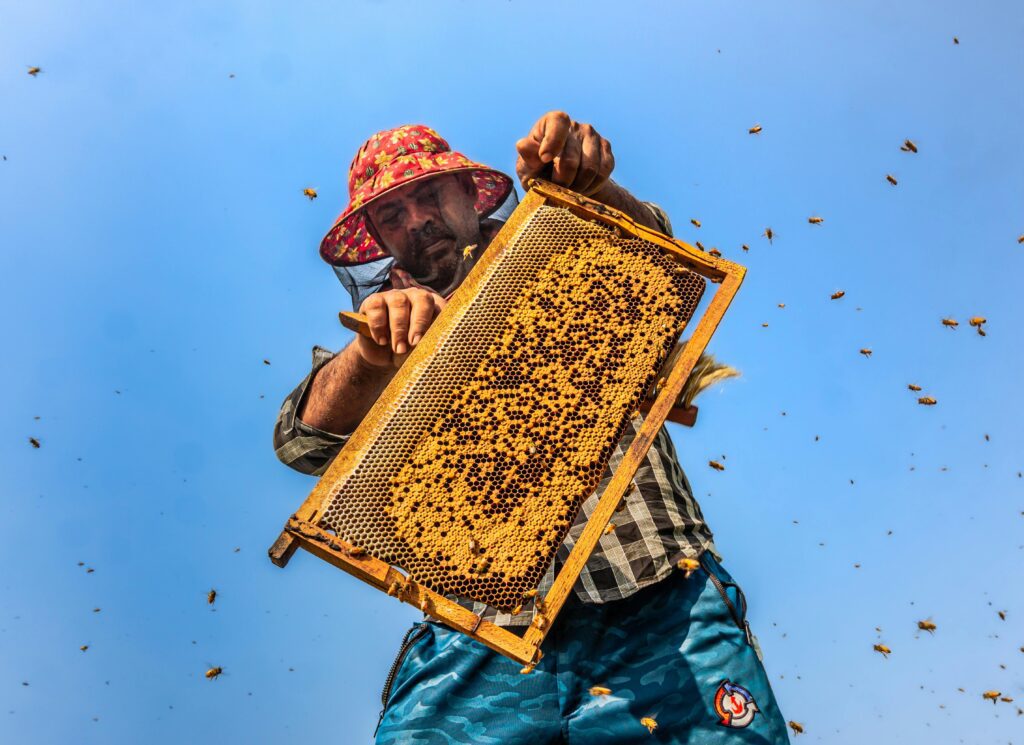
Inadequate forage will not only lower honey production but also threaten the general sustainability of bee farming businesses.
Challenges in Colony Management
Colony management of bees is also a challenging practice of bee farming. Bees are environmentally, hive disturbance, and rough handling sensitive. Inadequate management of bee colonies can cause swarming, honey production decline, or even colony loss.
New bee farmers usually struggle with managing bee behavior, brood rearing, and managing hives through seasons. Apiculture farming requires ongoing learning and adjustment, such as checking queen status, hive space management, and avoiding overcrowding.
Acquiring experience by actual observation and mentorship will help address such issues, thus resulting in a long-term honey bee farm in the future.
Market and Economic Risks
As profitable as bee rearing is, economic and market risks may become challenging. The prices of honey, beeswax, and other by-products will fluctuate depending on demand, competition, and quality. Moreover, incorrect harvesting or storage will decrease the market value of honey.
Apiculture farming is well-packed, well-established market channels, and organized to achieve steady income. Farmers venturing into diversified products, i.e., honey, beeswax, and royal jelly, can minimize dependence on a single source of revenue.
Market dynamics and client relationships decide the profitability and feasibility of a honey bee farm.
Solutions for a Successful Honey Bee Farm
Embracing Sustainable Apiculture Practices
Sustainable practices are the foundation of a successful honey bee farm. By reducing chemicals and increasing natural practices, farmers are able to produce healthy colonies and quality honey yields.
One would, for example, employ organic pest control, use bee-friendly flowers, and not use synthetic pesticides in surrounding fields to safeguard bees and preserve productivity.
Such practices significantly boost apiculture farming as they decrease the strain on the colony, increase resistance, and also increase ecologically friendly characteristics.
It also becomes increasingly likely for sustainable beekeepers to sell their honey as organic or green-friendly, with health-conscious buyers coming in. With green methods of operation, a honey bee farm can be productive year-round without harming the environment.
Strategic Hive Placement
Effective placement of hives is critical in an effort to realize high honey yields and healthy colonies. Bees require ready access to abundant floral sources, pure water, and protection from extreme weather.
Skilled bee farmers usually locate hives in orchards, wildflower fields, or seasonal bloom fields to provide a consistent nectar and pollen source. Accurate hive orientation, with entrance openings pointed away from prevailing winds and direct sun, also triggers bee activity.
Urban rooftop or balcony hives likewise prosper with flowering plants nearby. Intentional placement of hives not only increases honey yield but also leads to sustainable, healthy colonies over the long term in your honey bee farm.
Effective Colony Management
Effective colony management is required to avoid swarming, sustain productivity, and promote long-term sustainability. Regular checks enable early detection of disease symptoms of disease symptoms, overcrowding, or queen problems.
Experienced bee farmers turn frames, inspect brood patterns, and replace queens as needed to ensure healthy colonies. Apiculture farming is advantaged by such watchful care in the sense that it minimizes loss and optimizes honey production.
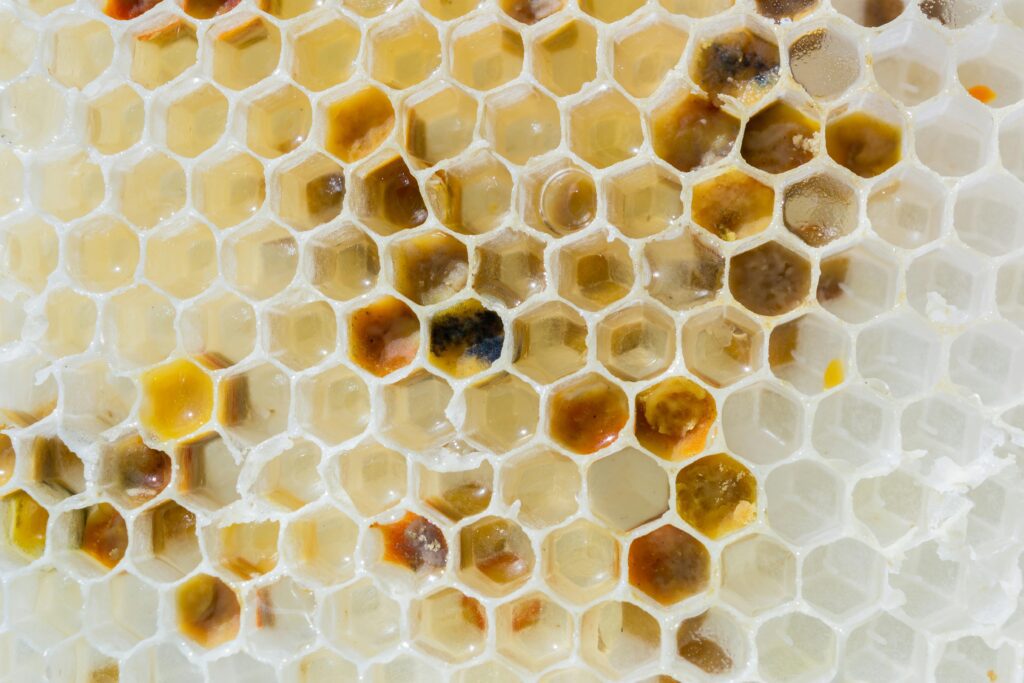
In addition, guiding new bee farmers or taking apiculture courses may enhance colony-handling ability to facilitate the smooth operation of the honey bee farm with minimum disruption.
Supplemental Nutrition and Feeding
In the low nectar flow seasons, the best cure is supplemental feeding. Sugar syrup, pollen substitutes, and other natural feed supplements may support colonies during low-season or drought seasons.
Good nutrition supports brood development, immunity, and general colony vigor and has direct impact on honey production. Most successful honey bee farms organize an annual feeding program based on geographical floral regimes and climatic regimes.
This pre-emptive exercise ensures colony health and maximum productivity in bee farming. With proper planning of supplementary feeding, bee farmers are able to minimize the threat of starvation and ensure a healthy honey bee farm irrespective of seasonal patterns.
Market Development and Product Diversification
A economically viable honey bee farm is not only production-based but also on proper marketing and product diversification. Honey farmers can market honey in different forms such as raw, flavored, or organic to suit various consumer segments.
These by-products like beeswax, propolis, and royal jelly provide alternative sources of income and minimize reliance on honey sales alone. Having established good local or web-based market channels provides guaranteed demand and improved prices.
Income is also derived from educational tours, workshops, or farm visits by some apiculture farmers to create awareness on bee farming. Market construction and diversification of products are the most critical elements of long-term sustainability and profitability of a honey bee farm.
FAQs
1. What is the difference between bee farming and apiculture farming?
Bee farming and apiculture farming are two terms which actually point to the very same thing, i.e., keeping and breeding honey bees with a view to gaining honey, beeswax, and other products.
Nevertheless, “bee farming” is primarily used as a common term against “apiculture farming,” which is more scientific and professional and is primarily used in agricultural books. Both refer to keeping healthy colonies, maximizing honey production, and overall success in a honey bee farm.
Knowledge about these terms allows novices to initiate the practice using the appropriate methods and scientific knowledge, thereby increasing the productivity and profitability of their honey bee farm.
2. How do I begin a small honey bee farm?
It is important to plan well, select good hives, and understand floral sources available locally. First, decide on a good bee species most appropriate for your area. Second, buy good quality hives like Langstroth or Dadant and position them in the vicinity of flowers with nectar abundance.
Good colony management, frequent inspections, and off-season feeding in addition help keep bees in good health. Start with minimal hives to allow you time to study and gradually grow your apiculture farm business. With planning and correct management, even a small honey bee farm can generate high returns.
3. What are the major problems of bee farming?
Bee farming is plagued by challenges such as climate dependence, bad forage, pests, diseases, and market uncertainty. Climate change can lower nectar volumes, while pests such as Varroa mites or diseases such as American foulbrood can weaken the colony.
Bad flowering plants can impact honey production, and bad planning of the market can lower profitability. Good apiculture farming overcomes such problems by way of sustainable production, proper placement of hives, well-managed colonies, and sales diversification of products.
Farmers may anticipate such risks to have a successful honey bee farm.
4. How do I enhance honey production in apiculture farming?
Optimization of honey production is an integration of good colony management, nutrition, and care of hives. Off-flower supplemental feeding, robust and healthy colonies, and high-yielding species of bees are necessary.
Hives being strategically located close to diversified blooming plants provide a steady stream of nectar. Periodic inspections and the elimination of pests and diseases at the correct time prevent stressing the colonies.
Ongoing application of these methods optimizes honey production and provides for the long-term viability of a honey bee farm.
5. What are the advantages of having a honey bee farm?
Honey bee farm ownership has numerous advantages, economic and environmental. It provides an ongoing supply of honey, beeswax, royal jelly, and propolis, which earns substantial income. Bees also serve as natural pollinators, enhancing crop yield and promoting biodiversity.
Honey and bee products also provide nutritional and medicinal benefits, promoting good health and well-being. Apiculture farming is green agriculture supporting while offering a sustainable business opportunity.
A managed honey bee farm ensures profitability, contribution to the environment, and farmer happiness.
Conclusion
Honey bee farming is not merely honey production—it is a sustainable, profitable, and environmental-friendly activity that can revolutionize agricultural enterprises.
Through the practice of apiculture farming, farmers and entrepreneurs can reap several sources of revenue from honey, beeswax, royal jelly, among other by-products while, on the other hand, promoting biodiversity and pollination in the surrounding environment.
It involves well-planned planning, good hive management, positioning the colony at strategic locations, and the maintenance of colony health for a successful honey bee farm.
Adopting the profitable practices discussed in this blog—like choosing the optimal bee species, working in a sustainable way, supplementary feeding of bees, and diversification of the products—will substantially enhance productivity and profitability.
Pests, disease, and climatic unpredictability are issues, admittedly, but are best addressed efficiently through adequate knowledge, experience, and preventive steps.
Commencing or establishing a honey bee farm has long-term economic as well as environmental advantages. Whatever you do, whether you are a beginner joining bee farming or an old farmer who wishes to upgrade your apiculture farm business, there has to be continuous care, learning, and adaptation.
Do it now: purchase your first hive, learn local floral resources, and implement these practices to have a healthy, profitable, and sustainable honey bee farm. With commitment and the proper methods, beekeeping is a lucrative business that is healthy for you and the planet.
